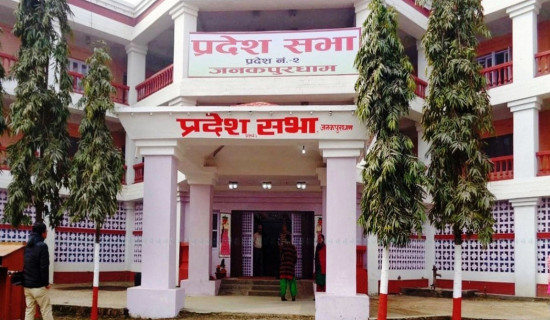- Thursday, 4 December 2025
Teachings Of Buddha
Dixya Poudel
The Four Noble Truths by Lord Buddha sound simple yet are quite intricate. We all know that life isn’t always sunshine, occasionally there are times when we feel desolate and troubled. At such times, we seek help and advice for a better life, even turning to the teachings of Lord Buddha. Along with meditation and mindfulness, Buddhism has concepts of rebirth, karma and dharma.
They decree that our action which is karma decides our fate in this life and beyond. Buddha was the one to say that there is suffering in life. However, he didn’t just assert that suffering is inevitable, he also said that while suffering arises from attachment and desire, it can also be cured. He then laid down Noble Eightfold Path to ease or even eradicate suffering.
Centuries after Lord Buddha roamed across Nepal and India in search of truth through meditation and self-discipline, his teachings still exert a profound influence. He is known to have attained enlightenment which according to him is what human life should aspire to. Enlightenment translates to ‘moksha’ in Nepali and has deep connotations.
Buddhism today is taught widely in classrooms, meditation halls and monasteries so that its wealth of knowledge is transmitted and kept alive and well. However, little is known about Buddha. In 1896 AD, when archeologists unearthed the remains of Temple of Maya Devi (Buddha’s mother) in Lumbini with brick structures that dated to 3rd century BC, they were stunned.
Along with Ashoka pillar inscribed in Brahmi script, the discovery added to the historical account of Lord Buddha. As such, Emperor Ashoka of India had constructed a pillar in Lumbini in 249 BC as a commemoration to Buddha. Prior to these findings it was thought that Buddha was born in India, however, these archeological remains attested that Buddha was indeed born in Lumbini, Nepal. Since then, Nepal has been known as a birthplace of Siddhartha Gautam who was to become the one and only, Lord Buddha.
Lumbini is situated in the Terai region of Nepal where tourists throng the ancient site which has relics from 3rd century BC to 15th century AD. One can observe various shrines, artifacts and monuments such as Maya Devi Temple and Ashoka Pillar. Much to the delight of Buddhist pilgrims, Lumbini is currently being developed as a Buddhist pilgrimage centre. While Lumbini stands as the birthplace of Buddha, it was in Bodh Gaya, where he attained enlightenment.
After his death, his teachings were preserved and taught by his loyal disciples, thanks to whom today we know about the details of Buddhism.
While Noble Truths and Noble Eightfold Path are a common knowledge among people as essence of Buddhism, the more intricate and in-depth knowledge is taught in monasteries such as in Boudha which lies at the heart of Kathmandu.
Ancient knowledge holds a certain degree of enigma even if they might be esoteric. If one observes the West, one can see how well-preserved ancient Greek and Roman knowledge is. The West treasures and reveres its timeless heritage.
It should be an example to less developed nations such as Nepal that has the responsibility of conserving ancient relics along with age-old knowledge like Buddhism. Additionally, in this ever-dividing world Buddhism can help preach the lessons of peace and harmony.












-original-thumb.jpg)




